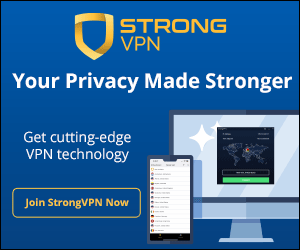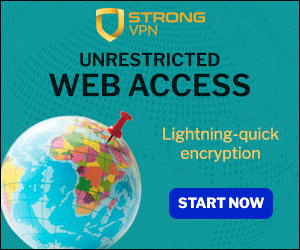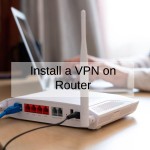In today's digital landscape, ensuring the security and privacy of your online activities has become paramount. With cyber threats looming large, especially on public Wi-Fi networks, using a VPN (Virtual Private Network) is no longer just an option but a necessity. If you're a MacBook user, this comprehensive guide will walk you through the process of connecting to a VPN, exploring the best vpn free options, understanding VPN protocols, and choosing the most suitable VPN application for your device.

Safeguarding Your VPN Online Privacy
In an era where cyberattacks and data breaches are rampant, safeguarding your online privacy has never been more crucial. A VPN serves as a shield, encrypting your internet connection and ensuring that your vpn online activities remain private and secure. Whether you're browsing the web, streaming content, or conducting sensitive transactions, a VPN acts as a barrier, preventing unauthorized access to your data.
Understanding VPN Protocols Choosing the Right Encryption
When it comes to VPN protocols, there are several options available, each with its own set of advantages and limitations. For MacBook users, protocols like OpenVPN, IKEv2, and L2TP/IPsec are commonly supported. OpenVPN, known for its open-source nature and robust security features, is often preferred for its reliability and versatility. IKEv2, on the other hand, is renowned for its speed and stability, making it ideal for seamless connectivity on macOS devices.
VPN Appliaction Download for MacBook
To begin your journey towards secure browsing on your MacBook, the first step is to download a VPN application. With a plethora of options available online, it's essential to choose a reputable VPN provider that prioritizes user privacy and security. Look for VPNs that offer easy-to-use applications, a wide range of server locations, and strong encryption protocols. Once you've selected a suitable VPN, simply vpn download from the provider's website or the Mac App Store, and follow the installation instructions.
Evaluating the Best Free VPN Options Balancing Security and Affordability
While paid VPN services often offer premium features and enhanced security, there are also several best free vpn options available for budget-conscious users. However, it's important to exercise caution when opting for a free VPN, as some providers may compromise on security or sell user data to third parties. When evaluating free VPNs for your MacBook, consider factors such as data limits, server locations, and encryption protocols. Look for reputable providers that offer a generous data allowance, strong encryption, and a strict no-logs policy.
VPN Apps Simplifying Secure Connectivity
VPN applications play a pivotal role in simplifying the process of connecting to a VPN on your MacBook. Designed with user-friendliness in mind, these apps streamline the setup process and offer intuitive interfaces for seamless navigation. Look for VPN app that offer features such as one-click connectivity, automatic server selection, and a kill switch for added security. With the right VPN application installed on your MacBook, you can enjoy peace of mind knowing that your online activities are shielded from prying eyes.
Setting Up VPN Gateway Establishing a Secure Connection
The VPN gateway serves as the entry point to the VPN network, facilitating secure communication between your MacBook and the VPN server. Configuring the VPN gateway on your device is a straightforward process that involves entering the server address, authentication credentials, and encryption settings provided by your VPN provider. Once the VPN gateway is set up, your MacBook will establish a secure tunnel to the VPN server, encrypting all incoming and outgoing traffic to safeguard your online privacy.
Exploring Free VPN Services Uncovering Hidden Risks
While free VPN services may seem like an attractive option, they often come with hidden risks and limitations. Many free VPN providers rely on advertising revenue or data monetization to sustain their operations, leading to potential privacy concerns for users. Additionally, free VPNs may impose data caps, throttle connection speeds, or limit server access, making them unsuitable for bandwidth-intensive activities such as streaming or gaming. Before choosing a free VPN for your MacBook, carefully read the provider's privacy policy and terms of service to ensure that your data remains protected.
Accessing VPN Services Online Harnessing the Power of Browser-Based VPNs
In addition to standalone VPN applications, many providers offer browser-based VPN services that allow you to secure your internet connection directly from your web browser. These browser extensions offer a convenient solution for users who prefer not to install additional software on their devices. Simply install the VPN extension compatible with your preferred browser, and with a single click, you can encrypt your online traffic and mask your IP address. Browser-based VPNs are particularly useful for securing your browsing sessions when using public Wi-Fi networks or accessing geo-restricted content.
VPN for MacBook Tailored Solutions for macOS Users
With the popularity growing vpn for macbook devices, many VPN providers offer dedicated applications optimized for MacBook users. These VPNs are specifically designed to offer seamless integration with the macOS operating system, providing enhanced performance, stability, and compatibility. Look for VPNs that offer features such as split tunneling, DNS leak protection, and automatic Wi-Fi security to maximize your online privacy and security on your MacBook.
Finding the Best Free VPN for MacBook Navigating the Free VPN Landscape
Finding the bestfree vpn for macbook requires careful consideration of various factors, including security, speed, and usability. While there are numerous free VPN options available, not all of them offer the same level of protection or performance. When evaluating free VPNs, prioritize providers that offer strong encryption, a no-logs policy, and a user-friendly interface. Additionally, consider factors such as server locations, bandwidth limitations, and device compatibility to ensure that the VPN meets your specific needs.
Installing VPN Applications Streamlining the Setup Process
Installing a VPN application on your MacBook is a simple and straightforward process that can be completed in a matter of minutes. Whether you're downloading the application directly from the provider's website or the Mac App Store, the installation wizard will guide you through each step of the process. Once the VPN application is installed, launch the app, log in with your credentials, and connect to a server of your choice to begin browsing securely. With just a few clicks, you can enjoy the benefits of encrypted internet traffic and enhanced privacy on your MacBook.
Understanding VPN Applications Harnessing the Power of Encryption
VPN applications are designed to encrypt your internet connection and route your online traffic through a secure tunnel, protecting your data from interception or surveillance. By encrypting your internet traffic, VPN applications prevent third parties, such as hackers, government agencies, or internet service providers, from monitoring your online activities or harvesting your personal information. Additionally, VPN applications can help you bypass geo-restrictions, access region-locked content, and protect your anonymity while browsing the web.
Enhancing Security with VPN Shielding Your MacBook from Cyber Threats
In an age where cyber threats are ever-present, enhancing the security of your MacBook is paramount. By using a VPN, you can fortify your device against various online threats, including malware, phishing attacks, and man-in-the-middle attacks. VPNs encrypt your internet traffic, making it virtually impossible for hackers to intercept or decipher your data. Additionally, VPNs mask your IP address, making it difficult for adversaries to trace your online activities back to your device. With a VPN installed on your MacBook, you can browse the web with confidence, knowing that your privacy and security are safeguarded at all times.
Choosing the Best VPN for MacBook Making an Informed Decision
When selecting a VPN for your MacBook, it's essential to consider various factors, including security features, server locations, and pricing plans. Look for VPN providers that offer robust encryption, a strict no-logs policy, and a diverse network of servers spread across the globe. Additionally, consider your specific needs and usage patterns when choosing a VPN plan, as some providers offer tiered pricing plans with different features and limitations. By carefully evaluating your options and choosing a reputable VPN provider, you can ensure that your MacBook remains protected against online threats while enjoying unrestricted access to the internet.
Empowering Your MacBook with Secure Connectivity
Connecting to a VPN on your MacBook is a simple yet effective way to enhance your online privacy and security. Whether you're browsing the web, streaming content, or conducting sensitive transactions, a VPN offers peace of mind by encrypting your internet connection and shielding your data from prying eyes. By following the steps outlined in this guide, you can easily set up a VPN on your MacBook, explore the best free options available, and choose the most suitable VPN application for your device. With secure connectivity at your fingertips, you can confidently navigate the digital world knowing that your MacBook is protected against cyber threats.
How to Set Up Connect VPN on MacBook A Step-by-Step Guide
Setting up a VPN on your MacBook is a straightforward process. Follow these steps to get started
Choose a VPN Provider Research and select a reputable VPN provider that offers a macOS-compatible application.
Download and Install VPN Application Visit the VPN provider's website and download the macOS version of their VPN application. Follow the installation prompts to install the application on your MacBook.
Launch the VPN Application Once the installation is complete, launch the VPN application on your MacBook.
Log In or Sign Up If you already have an account with the VPN provider, log in using your credentials. If not, sign up for a new account.
Connect to a Server After logging in, you'll be presented with a list of server locations. Choose a server location from the list and click the "Connect" button to establish a VPN connection.
Verify Connection Once connected, verify that your MacBook is now connected to the VPN by checking your IP address and ensuring that your internet traffic is encrypted.
Best VPN Right Now Top Picks for MacBook Users
When it comes to choosing the best VPN for your MacBook, several factors should be considered, including security features, server network, speed, and customer support. Here are some top picks
ExpressVPN Known for its blazing-fast speeds, strong encryption, and wide server network, ExpressVPN is a popular choice among MacBook users.
NordVPN With a vast server network spanning across the globe, NordVPN offers robust security features, including double VPN encryption and a strict no-logs policy.
Surfshark Offering unlimited simultaneous connections, Surfshark is a budget-friendly option that doesn't compromise on security or performance.
CyberGhost With dedicated servers optimized for streaming and torrenting, CyberGhost is an excellent choice for MacBook users who prioritize entertainment.
Private Internet Access (PIA) PIA boasts a large server network, advanced security features like ad-blocking and malware protection, and a user-friendly interface.
Easy Way to Install Connect VPN on MacBook Simplified Installation Process
Installing a VPN on your MacBook doesn't have to be complicated. Most VPN providers offer user-friendly applications that streamline the installation process. Here's a simplified installation guide
Download VPN Application Visit the VPN provider's website and download the macOS version of their VPN application.
Install Application Double-click the downloaded file to initiate the installation process. Follow the on-screen instructions to install the VPN application on your MacBook.
Launch Application Once the installation is complete, locate the VPN application in your Applications folder and double-click to launch it.
Log In or Sign Up If you already have an account with the VPN provider, log in using your credentials. If not, sign up for a new account.
Connect to a Server After logging in, select a server location from the list provided by the VPN application and click the "Connect" button to establish a VPN connection.
Verify Connection Once connected, verify that your MacBook is now protected by the VPN by checking your IP address and ensuring that your internet traffic is encrypted.
Configuration Connect VPN on MacBook Tailoring Your VPN Settings
Most VPN applications for MacBook come with default settings that work well for the majority of users. However, you may want to customize certain settings to better suit your needs. Here's how to configure your VPN settings on your MacBook
VPN Protocols Depending on your VPN provider, you may have the option to choose between different VPN protocols, such as OpenVPN, IKEv2, or L2TP/IPsec. Research each protocol to determine which one offers the best balance of speed and security for your needs.
Kill Switch Enable the kill switch feature to automatically disconnect your MacBook from the internet if the VPN connection drops. This prevents your IP address from being exposed in the event of a connection failure.
Split Tunneling Some VPN applications offer split tunneling, which allows you to route only specific traffic through the VPN while allowing other traffic to bypass the VPN connection. This can be useful for conserving bandwidth or accessing local network resources.
DNS Leak Protection Ensure that your VPN application has DNS leak protection enabled to prevent your DNS queries from being exposed to your ISP or other third parties.
Auto-Connect Set up your VPN application to automatically connect to the VPN whenever your MacBook starts up or whenever you connect to a new Wi-Fi network.
Automatic Configuration Connect VPN on MacBook Streamlined Setup Process
Many VPN providers offer automatic configuration options that make setting up a VPN on your MacBook a breeze. Here's how to automatically configure your VPN
Download VPN Application Visit the VPN provider's website and download the macOS version of their VPN application.
Install Application Double-click the downloaded file to initiate the installation process. Follow the on-screen instructions to install the VPN application on your MacBook.
Launch Application Once the installation is complete, launch the VPN application on your MacBook.
Automatic Configuration In most cases, the VPN application will automatically configure your connection settings based on your location and network conditions.
Connect to a Server After the automatic configuration is complete, simply select a server location from the list provided by the VPN application and click the "Connect" button to establish a VPN connection.
Verify Connection Once connected, verify that your MacBook is now protected by the VPN by checking your IP address and ensuring that your internet traffic is encrypted.
Manual Configuration Connect VPN on MacBook Advanced Setup Options
If you prefer to have more control over your VPN configuration, you can manually configure your VPN connection settings on your MacBook. Here's how
VPN Settings Open the Network preferences pane on your MacBook by clicking the Apple menu, selecting "System Preferences," and then clicking "Network."
Add VPN Connection Click the "+" button at the bottom left corner of the Network preferences pane to add a new network connection.
Choose VPN Type From the Interface dropdown menu, select "VPN." Then, choose the VPN type from the VPN Type dropdown menu (e.g., IKEv2, L2TP over IPSec, Cisco IPSec).
Enter Connection Details Enter the connection details provided by your VPN provider, including the server address, account name, and authentication settings.
Authentication Settings Click the "Authentication Settings" button to configure additional authentication options, such as a password or shared secret.
Connect to VPN Once you've entered all the required connection details, click the "Connect" button to establish a VPN connection.
Verify Connection After connecting to the VPN, verify that your MacBook is now protected by checking your IP address and ensuring that your internet traffic is encrypted.
Why and When to Use Connect VPN on MacBook Understanding the Benefits
There are several scenarios in which using a VPN on your MacBook can be beneficial
Secure Browsing When connecting to public Wi-Fi networks, such as those in cafes, airports, or hotels, a VPN encrypts your internet traffic, preventing hackers from intercepting your data.
Privacy Protection A VPN masks your IP address and encrypts your internet traffic, making it difficult for third parties to track your online activities or collect your personal information.
Access Geo-Restricted Content By connecting to a server in a different country, you can bypass geo-restrictions and access region-locked content on streaming platforms, social media sites, and other websites.
Torrenting Safely If you engage in torrenting or peer-to-peer file sharing, a VPN can provide an extra layer of security by hiding your IP address from copyright trolls and other prying eyes.
Work Remotely If you work remotely or travel frequently, a VPN allows you to securely access your company's network and resources from anywhere in the world.
Why Should You Use Connect VPN on MacBook Protecting Your Digital Privacy
Using a VPN on your MacBook offers several compelling benefits for protecting your digital privacy
Encrypts Internet Traffic A VPN encrypts your internet traffic, preventing ISPs, government agencies, hackers, and other third parties from monitoring your online activities.
Masks IP Address By masking your IP address with the IP address of the VPN server you're connected to, a VPN makes it difficult for websites, advertisers, and other entities to track your online movements.
Bypasses Censorship In countries with strict internet censorship laws, a VPN allows users to bypass government-imposed restrictions and access blocked websites and services.
Secures Public Wi-Fi When connecting to public Wi-Fi networks, such as those in cafes, airports, or hotels, a VPN encrypts your data, protecting it from potential hackers and eavesdroppers.
Preserves Anonymity Whether you're browsing the web, streaming content, or downloading files, a VPN helps preserve your anonymity by masking your digital footprint and keeping your online activities private.
How to Get Connect VPN on MacBook Finding the Right Provider
To get a VPN on your MacBook, follow these steps
Research Providers Start by researching reputable VPN providers that offer macOS-compatible applications.
Compare Features Compare features such as server network, security protocols, encryption strength, speed, and customer support.
Read Reviews Read reviews from other users to gauge the reliability and performance of each VPN provider.
Choose a Plan Once you've narrowed down your options, choose a VPN plan that suits your needs and budget.
Download Application Visit the VPN provider's website and download the macOS version of their VPN application.
Install and Connect Install the VPN application on your MacBook, log in with your credentials, and connect to a server of your choice to start browsing securely.
Details comparison
Setup Process:
- MacOS Built-in VPN: Navigate to System Preferences > Network > + > VPN > Choose VPN Type > Enter Configuration Details > Connect.
- Third-Party VPN Apps: Download and install preferred VPN app from Mac App Store or provider's website > Launch app > Log in > Connect.
Security Features:
- MacOS Built-in VPN: Utilizes industry-standard encryption protocols (e.g., L2TP/IPsec, IKEv2/IPsec) for secure connections.
- Third-Party VPN Apps: May offer additional security features like ad-blocking, malware protection, and split tunneling for enhanced privacy.
Server Network:
- MacOS Built-in VPN: Limited to VPN servers provided by the chosen VPN protocol or VPN service.
- Third-Party VPN Apps: Offers access to a wider range of VPN servers across various locations globally, depending on the VPN service provider.
User Interface:
- MacOS Built-in VPN: Simple interface integrated into System Preferences for ease of use.
- Third-Party VPN Apps: May offer more intuitive interfaces with additional features such as server selection, speed tests, and one-click connect options.
Customer Support:
- MacOS Built-in VPN: Limited to general MacOS support resources.
- Third-Party VPN Apps: Often provides dedicated customer support channels including live chat, email support, and comprehensive online documentation.
Advantages and Benefits of Connect VPN on MacBook Enhancing Your Online Experience
Using a VPN on your MacBook offers numerous advantages and benefits
Enhanced Security A VPN encrypts your internet traffic, protecting it from interception and surveillance by hackers, government agencies, and other third parties.
Privacy Protection By masking your IP address and encrypting your data, a VPN helps preserve your anonymity and safeguard your personal information from prying eyes.
Access to Geo-Restricted Content With a VPN, you can bypass geo-restrictions and access region-locked content on streaming platforms, social media sites, and other websites.
Secure Public Wi-Fi When connected to public Wi-Fi networks, a VPN encrypts your data, preventing potential hackers and eavesdroppers from intercepting sensitive information.
Unrestricted Browsing With a VPN, you can browse the web without limitations or censorship, ensuring that you have access to the entire internet regardless of your location.
Torrenting Safely If you engage in torrenting or peer-to-peer file sharing, a VPN provides an extra layer of security by hiding your IP address and encrypting your data.
Connecting to a VPN on your MacBook is a simple yet effective way to enhance your online privacy, security, and freedom. Whether you're browsing the web, streaming content, or conducting sensitive transactions, a VPN offers peace of mind by encrypting your internet connection and safeguarding your data from prying eyes. With the information provided in this guide, you can confidently set up and use a VPN on your MacBook, knowing that your digital privacy is protected at all times.
Commonly Asked Questions and Answer
Q1 How do I access VPN settings on my MacBook?
- MacOS Built-in VPN: Navigate to System Preferences > Network > + > VPN.
- Third-Party VPN Apps: Open the VPN app installed on your MacBook.
Q2 Can I use a free VPN service on my MacBook?
- Yes, you can use free VPN services available on the Mac App Store or downloaded from the provider's website. However, be cautious as free VPNs may have limitations on data usage, server access, and may compromise your privacy with ads or data logging.
Q3 Why is my VPN connection on MacBook slow?
- VPN speed can be affected by various factors including your internet connection, distance to VPN servers, encryption strength, and server load. Try connecting to different VPN servers or using protocols optimized for speed like IKEv2/IPsec.
Q4 How can I ensure my VPN connection is secure on MacBook?
- Ensure your VPN app or built-in VPN settings are configured with strong encryption protocols (e.g., AES-256) and secure VPN tunneling protocols (e.g., OpenVPN, IKEv2/IPsec). Additionally, regularly update your VPN software for security patches.
Q5 Can I use VPN on public Wi-Fi networks with my MacBook?
- Yes, using a VPN on public Wi-Fi networks adds an extra layer of security by encrypting your internet traffic, preventing potential eavesdropping or data interception by malicious actors. Simply connect to your VPN before accessing the internet on public Wi-Fi networks.











